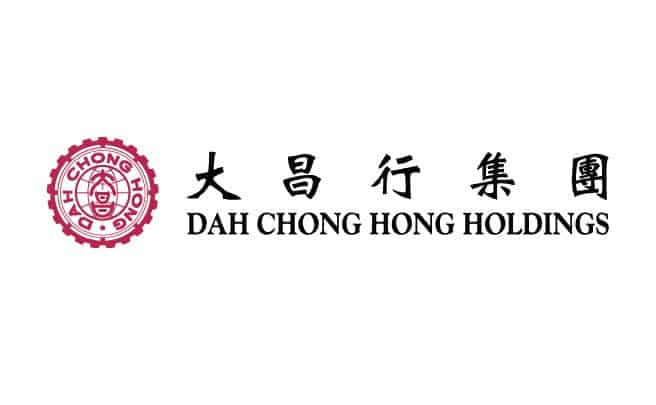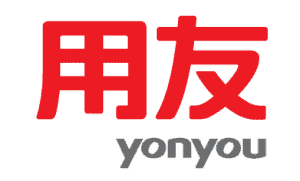
Dah Chong Hong Group
Cross-border Financial Shared Service Center
Introduction
Dah Chong Hong Group (DCH) was established in 1949 as a holding subsidiary of China CITIC Co., Ltd. Its business scope covers Hong Kong, Mainland China, and Asian countries. It is a diversified automobile and consumer goods agency and distribution company with extensive logistics coverage. In addition, DCH’s consumer products business includes own brand development, distribution, manufacturing, logistics and retail.
Headquartered in Hong Kong, the group has also established regional headquarters in Shanghai, Guangzhou, Shenzhen and other places to support business over about 40 regions and cities in China, to distribute high-quality international famous brands of automobiles, food and consumer products.
Automobile business
With 91 4S stores and 29 showrooms, for more than 20 diversified automobile brands across 13 provinces and cities, DCH has built a diverse motor business with dealerships and motor services including leasing, financing, repair and industrial services.
Background
With the continuous expansion of the scale of automobile business, financial management has been encountering the following problems:
i. Pressure on accounting function
DCH has business, including several auto brands, over 6 regions in the mainland, with more than 140 4S stores, and over 500 financial personnel. Financial processes are required to be carried out separately by each region and brand, forming the motivation of adopting financial shared service.
ii. Differentiations in the accounting standards
The financial systems used by 4S stores in different regions vary, bringing challenges to the consistency of the accounting and reporting standards.
iii. Integration of multiple systems
Each brand has a specific DMS system required by the automobile manufacturers to manage the inventory in and out of the warehouse. There are also maintenance system, sales system and rental system. To consolidate data from the systems and integrate with the headquarter financial system for reporting and analysis becomes a pressing concern.
Enterprise Business Innovation Strategy
Due to the continuous expansion of business scale, the differentiation of financial and business systems of the group’s subsidiaries have brought challenges to the accounting and reporting standards. The transformation aims at turning the collected data into a core asset of the enterprise and empower the enterprise:
i. Support the integration of channel business systems with a middle platform architecture
- Unified accounting standards
The group specifies the financial policy according to the business structure. Business units are not authorised to modify to reinforce the group control of the financial status of each 4S store.
- Data standardisation
Standardise the intermediate database and data format. The financial system can directly read the data stored in the business systems, and integrate with the NC financial system and the headquarter third party financial system.
- Integration of operation and finance
The headquarter can access aging report and financial statements of 4S stores in various regions at any time to provide guidance for subordinate companies to avoid risks.
Data related to the business process has been migrated to the new data analytic platform. For example, contracts from multiple channels, including the automobile rental business, can rely on this platform to achieve centralised management of data.
ii. Support the development of multi-brand and multi-channel business through the sharing of corporate financial resources:
- Adopt a Centralised business model. The centralised accounting system helps to establish unified financial policies and document processing resources. So as to achieve streamlining of financial staff.
- Adopt the middle platform architecture to interconnect separate systems. A unified intermediate database is built to store data of each business system, to allow the financial system to read and break the barriers between separate systems.
- The DMS system of the 4S stores transfers sales orders and bills to the intermediate platform after received the payment. The system reads the point of sale documents from the intermediate platform, generates the receivables and the receipts, and then generates financial vouchers. After the process is completed, the aging analysis and other reports are transmitted to the intermediate platform. Headquarter can therefore read the report data from the intermediate platform to complete the filling and reporting.
Project Value
i. Provide more financial data support
a) Support mobile terminals and lightweight front-end. The middle platform architecture mainly handles the business logics so as to highlight the front-end user experience.
b) Available at any time. The financial status of each 4S shop can be checked online. The system will not be affected during the upgrade.
c) High load capacity. The system is developed with a microservice architecture, which concurrently supports large group of users. There will be no delay even when the number of customers increases from hundreds to thousands.
ii. Support new business models
a) The system supports changing business environment and inventory of 4S shops across regions and brands
b) Financial risks can be better controlled through adopting unified financial policies and accounting rules.
c) Integrate the data of various business systems of the whole group to centralise the management of upstream and downstream documents.
iii. Provide stronger support
a) Enhance business development capabilities, form systematic management, and strengthen the relationship between the brands of 4S stores and group finance.
b) Strengthen risk control capabilities by standardising the management of channel business. The potential risks will be automatically controlled and eliminated during the business process.
c) Strengthen the financial management and control capabilities of different channels. Implement supervision on the financial performance of each 4S store, the issuance of expenses and the aging of accounts receivable.
What You Can Do
Accounting & Finance
Real-time Analysis
Trading
Wholesale Distribution
ResourcesWhitepapers
2022 YonBIP’s Economic and Social Impact Whitepaper
[dsm_breadcrumbs current_bottom="0px" _builder_version="4.15.1" _module_preset="default" current_font_size="1px" vertical_offset="34px" position_origin_a_tablet="" position_origin_a_phone="" position_origin_a_last_edited="on|phone" position_origin_f_tablet=""...
2021 Business Innovation Benchmark
[dsm_breadcrumbs current_bottom="0px" _builder_version="4.9.7" _module_preset="default" current_font_size="1px" vertical_offset="34px" position_origin_a_tablet="" position_origin_a_phone="" position_origin_a_last_edited="on|phone" position_origin_f_tablet=""...



